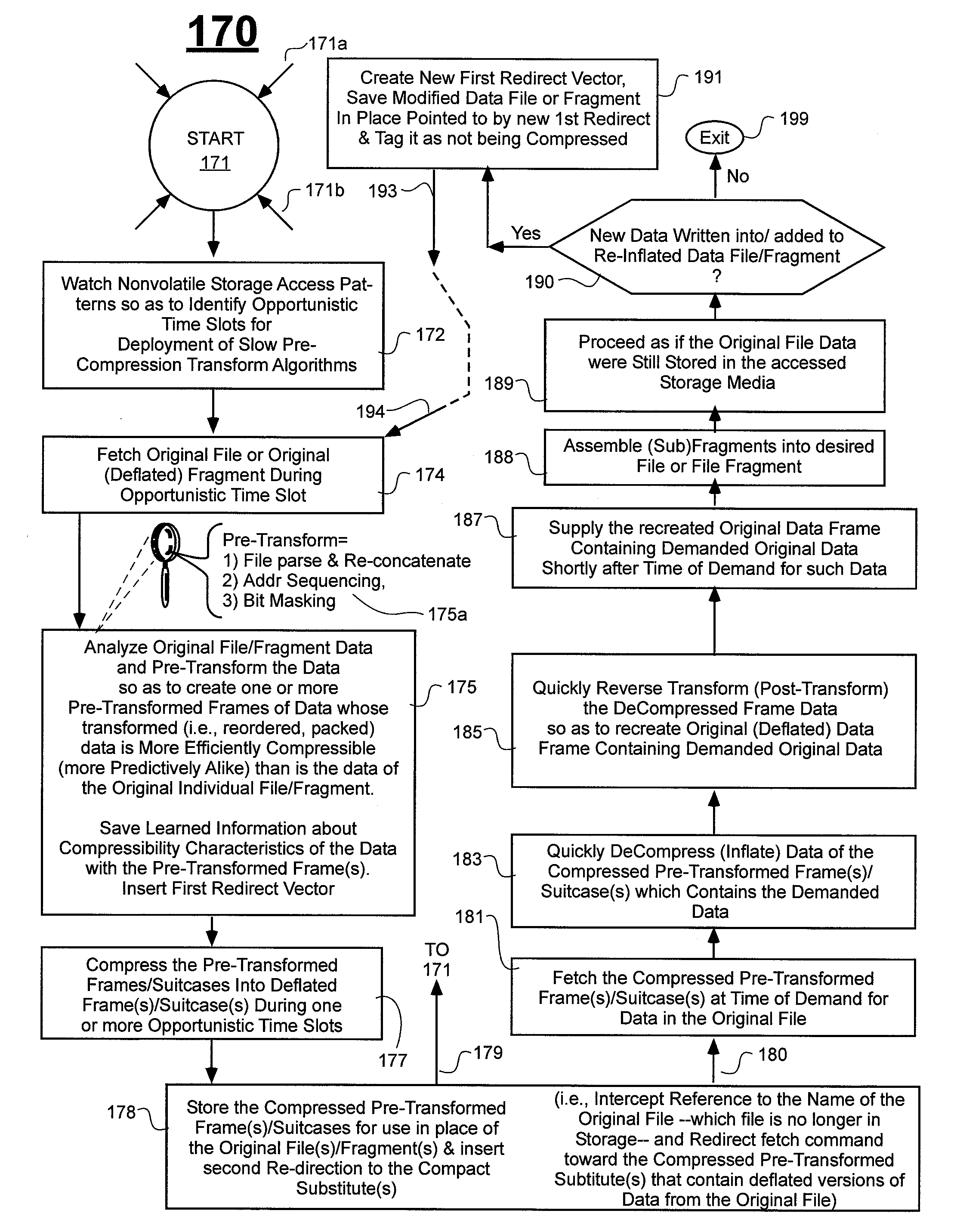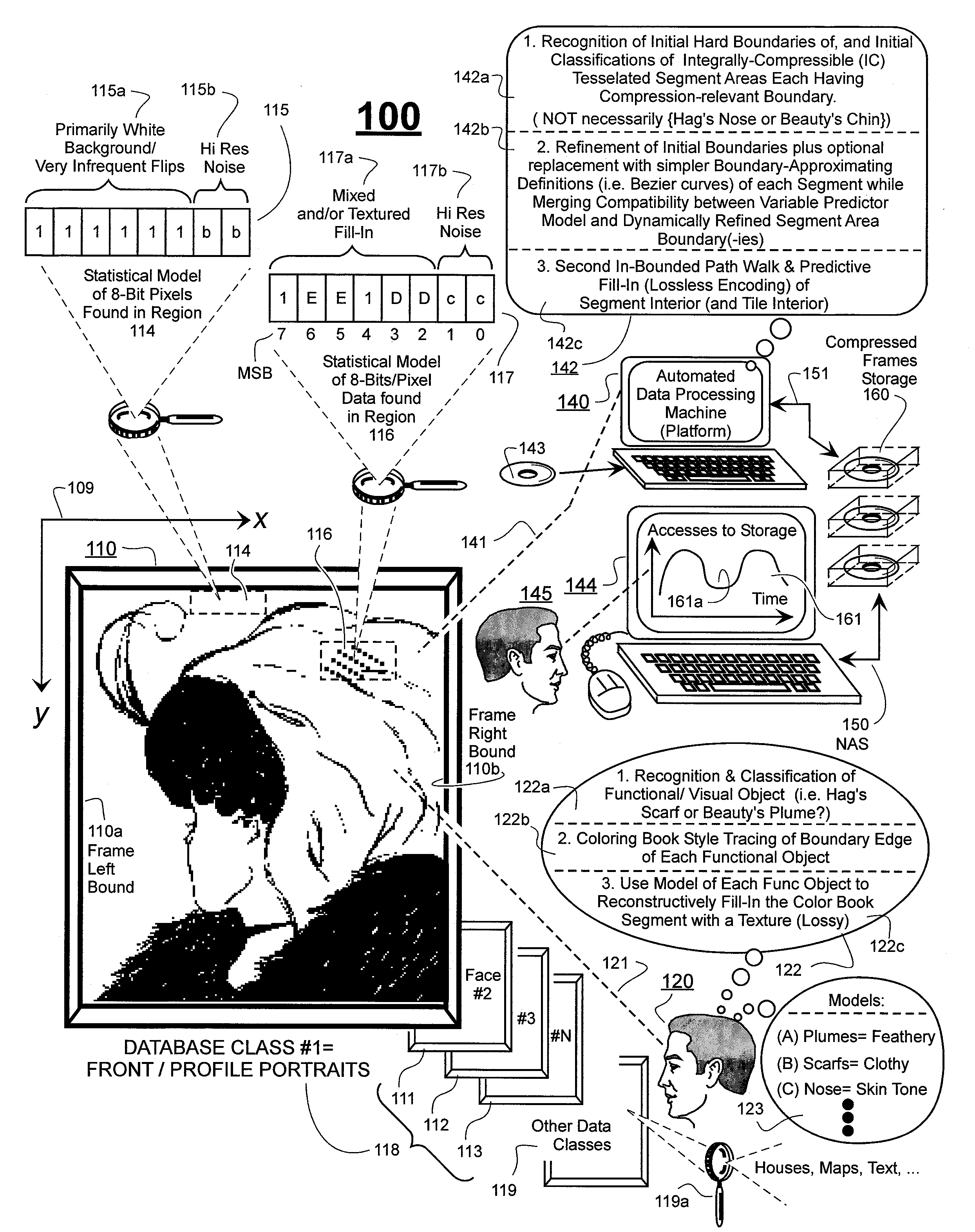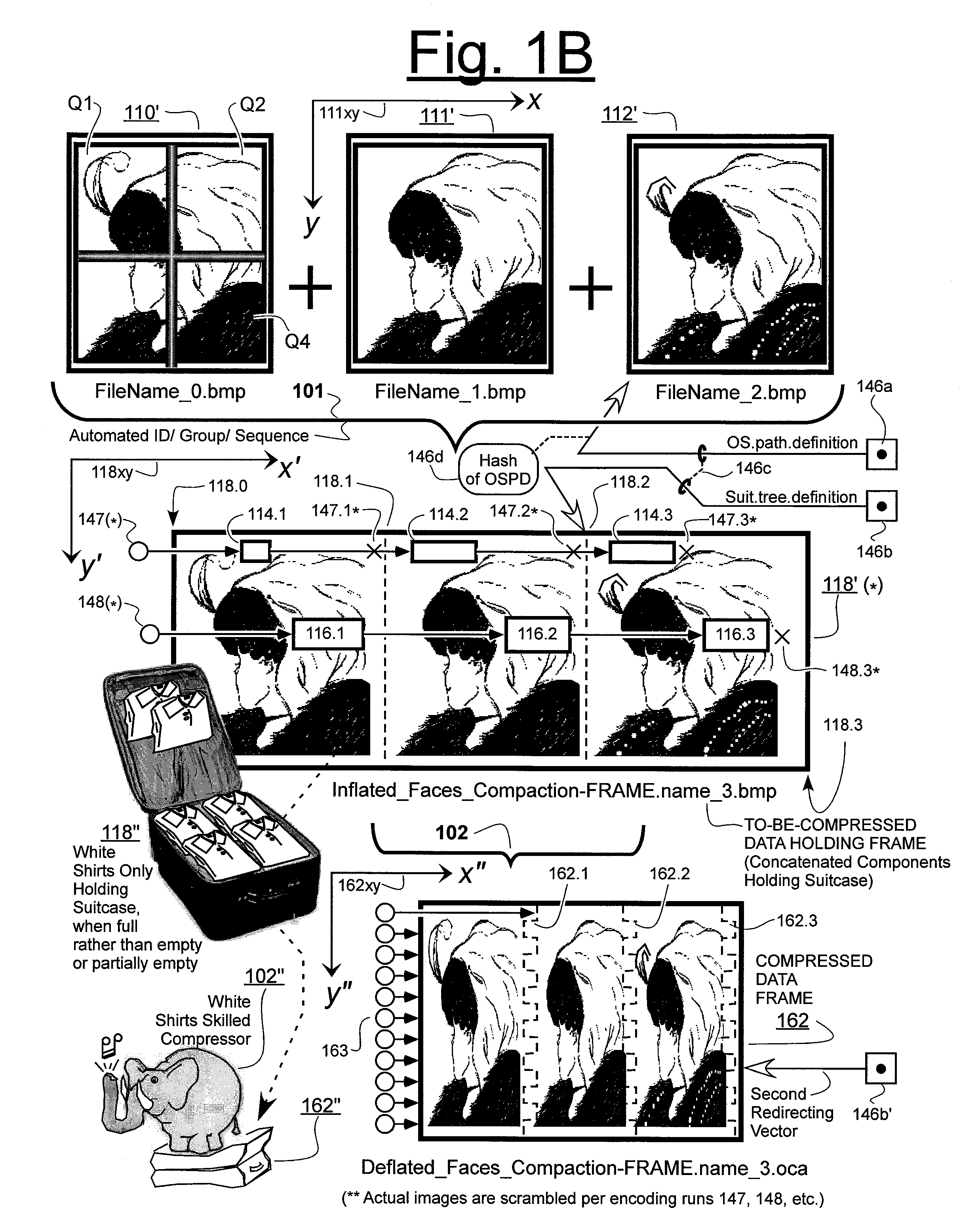A consequence of the above theoretical considerations is that
entropy encoding may not be used to effectively compress a
signal consisting of totally random 1's and 0's.
Practitioners are often surprised when they apply a conventional compression
algorithm to a highly disordered file (whose state of disorderliness is not known to them at the time) and they discover that the encoded output file is not reduced in size and is often larger in size.
In other words, the desired reduction of
file size was not achieved.
Generally, however,
machine-implemented compression algorithms are not designed to have intelligence for recognizing that they are working on highly disordered input data and as a result they blindly crunch out an encoded result that is larger in size than the original input.
As a result of
file storage blocking, actual storage size often does not decrease and time and energy are wasted in blindly performing comp / decomp operations on small sized files (i.e., files of size less than about 10 to 20 times the base storage
block size) without actually achieving reduction of consumed storage space.
Routine cleansings of this kind can help keep a compression engine from falling into a self-created quagmire where feedback within the engine causes the engine to persistently make bad encoding decisions, and as a result to persistently compress input data inefficiently or to fail to compress it at all.
The downside of such often-repeated cleansings is that compression efficiency is disadvantageously reduced in cases where the engine happens to be on a good prediction run and is persistently making good encoding decisions for a current patch of input data due to the engine having adaptively (and perhaps luckily) evolved itself into a good prediction mode.
Routine flushes in this case tend to indiscriminatingly erase good prediction models as well as bad ones and to thus hurt the overall compression efficiency.
However, if the compression engine (or more correctly, its internal prediction model) falls into a bad forecasting
rut and thus a bad
decision making rut, compression efficiency will disadvantageously drop and stay that way until the engine somehow purges itself of its ill formed prediction model and adaptively transitions towards one that is good for the currently incoming
stream of data.
If it fails to rain at the time you head home, you find that your forecast dependent action of keeping the umbrella with you all
morning was a bad and cumbersome one.
You became less efficient because you were more so hampered rather than helped by the presence of the hung onto umbrella.
If, on the other hand, the forecast is more often wrong rather than right, the compression engine performs poorly because it hung onto an encoding behavior that turned out to be a compression-hampering one rather than a helpful one.
If an input
stream is totally random, then all symbols have
equal probability of showing up in the next sample slot; there is no differential between symbol probabilities, and it is not possible to predict which symbol will come ahead of another.
As a result it is not theoretically possible to efficiently compress the size of the input
stream by means of
entropy encoding—this assuming each symbol is already minimized in size to the extent possible.
The problem comes when input files are substantially filled with less than perfectly orderly data, and particularly when the input data constitutes a sampling of naturally occurring phenomenon such as sound
waves detected in the wild or photographs taken in uncontrolled environments and so forth.
However it turns out that the compression efficiency of straight forward arithmetic encoding, even with
variable length runs, is not too spectacular.
Naturally-originated pictures on the other hand, tend to have non-repeating
data sequences and therefore the content of these patterns is much more difficult to predict with good accuracy.
The interspersing of compressively unalike sequences among otherwise SEC sequences can impede an adaptive predictor from maintaining a desired prediction model or smoothly transitioning from one successful prediction model to a next as it progresses through consecutive ones of progressively alike sequences presented to it.
Although an adaptive predictor can learn to predict the 100% likelihood of the “11” bit pattern always appearing in the two MSB's of a continuous stream of such memory data words, this is actually a waste of the predictor's resources, time and energy.
 Login to View More
Login to View More  Login to View More
Login to View More 


